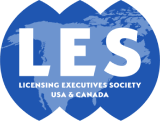
Paul Redmond Michel, Former Chief Judge, United States Court of Appeals for the Federal Circuit
Radical proposals by bureaucrats acting under pressure from prominent politicians are proceeding toward implementation, despite opposition from all who understand the issues. Among the victims will be members of LES because the volume and value of licensing transactions will inevitably shrink. The entire licensing profession may shrink, too.
But the list of victims also includes all taxpayers—all of us. How so? Because implementation puts taxpayers on the hook to compensate property owners for the Government’s seizure of their patent rights by marching in and its authorizing infringement of patent rights under 1498.
America’s universities and labs will suffer, too. Income they now receive as licensing fees will dry up, no longer paying for new research, new facilities, faculty salaries and scholarships.
Despite the seemingly endless list of victims, the proposals were sprung on the unsuspecting licensing profession, companies and universities by the Administration’s secret task force on price control. It had them announced by the National Institute on Standards (NIST) on December 23. Stakeholders were given only until February 6 to file reactions, an unusually short time that included three major holidays. Thousands nevertheless did so. Now the Administration has decreed that formal Regulations must be submitted quickly, presumably so they can be cleared for issuance before the November Presidential election.
Given the secrecy and surprise, stakeholders, including the U.S. Chamber of Commerce, asked for an extension. It was denied without explanation. An administrative appeal has been filed, but it remains unresolved. The Chamber also filed under FOIA for information on the task force’s membership and communications, requesting expedited response. It has not been granted. No information has been provided. Meanwhile, time passes. It appears an irresponsible race to hasty implementation is underway.
The twin pillars of the proposal—march-in and 1498—both aimed at controlling prices in private transactions involving private parties and private property rights, appear legally unauthorized. Short of actual implementation, however, their legality cannot be effectively challenged. Perhaps that is why they are labelled as “Draft Guidance” for Executive agencies. Moreover, they depart from understandings of the law consistently followed for over four decades. Just a year ago, NIH refused to march in, citing a lack of authority to control prices under the Bayh-Dole Act. That is because march in is only authorized if the invention is not being commercialized, not to control prices. In fact, the Government has never granted a march-in petition.
But the harms are already arising even before implementation because the mere existence of the proposal deters private companies from partnering with universities as they had done freely for over four decades. Under the Bayh-Dole Act, universities were allowed to patent their inventions and exclusively license commercialization to private companies able to develop, manufacture and distribute related products, even though the research was funded at least in part by a government agencies’ grant. The results were a surge of inventions, new companies, new jobs, and economic growth. That included the creation of the modern U.S. bio-tech industry which today dominates the field globally.
This proposal reverses the clock, setting us back to the pre-Bayh-Dole era before 1980 when nearly all inventions resulting from government funded research sat on shelves for want of a private company to develop and commercialize them. That was because the Government retained ownership of the patents and refused exclusive licenses. Accordingly, private companies could not justify the risk of no return on their large investments, typically hundreds of times the Government grants. Thus, the effects of impending implementation are not speculative. We have been there before.
Ironically, although the march-in proposal is being touted as lowering the price of patented drugs, it would only apply to about 5% of such drugs. It looks like false advertising, and by the Government, no less.
Moreover, the Guidance applies to all companies in all technologies, not just pharmaceuticals. If any of the twenty funding agencies feels the price of a product is too high, it can seize the patent owners’ exclusive patent rights and relicense them to competitors. As patents are private property, their confiscation will ultimately backfire on both the Government and taxpayers.
Although hard to imagine, the 1498 part of the proposal is even more dangerous. Why? Because it applies to all patents, not just the minority based on Government research grants. The threat of the Government ordering and authorizing infringing products for sale in the private market will deter innovation investments, stalling innovation itself.
Under established understandings of the law,1498 applies only when the Government itself needs the product. An example would be when the Government needs a jet engine for its military planes, but the engine is patented. Thus, it can order infringements, but only for use “by or for” the Government itself. The proposal, however, would allow the Government to do so even when not for its own use but use by consumers in the marketplace. The Government, then, rather than enforcing the law, would be violating it. Predictably, when implemented, this proposal, too, is likely to be declared unlawful.
But meanwhile, like the march-in proposal, it will cause mounting harm to our innovation system. Amazingly, this comes at a time when, according to a recent think tank study, China has already surpassed the U.S. in 37 of 44 advanced technologies, many with military applications.
What is being misleadingly presented as lawful and beneficial policy actually looks more like pure election year politics.
America can, and must, do better. The Administration should immediately withdraw these ill-considered, destructive and lawless proposals.

